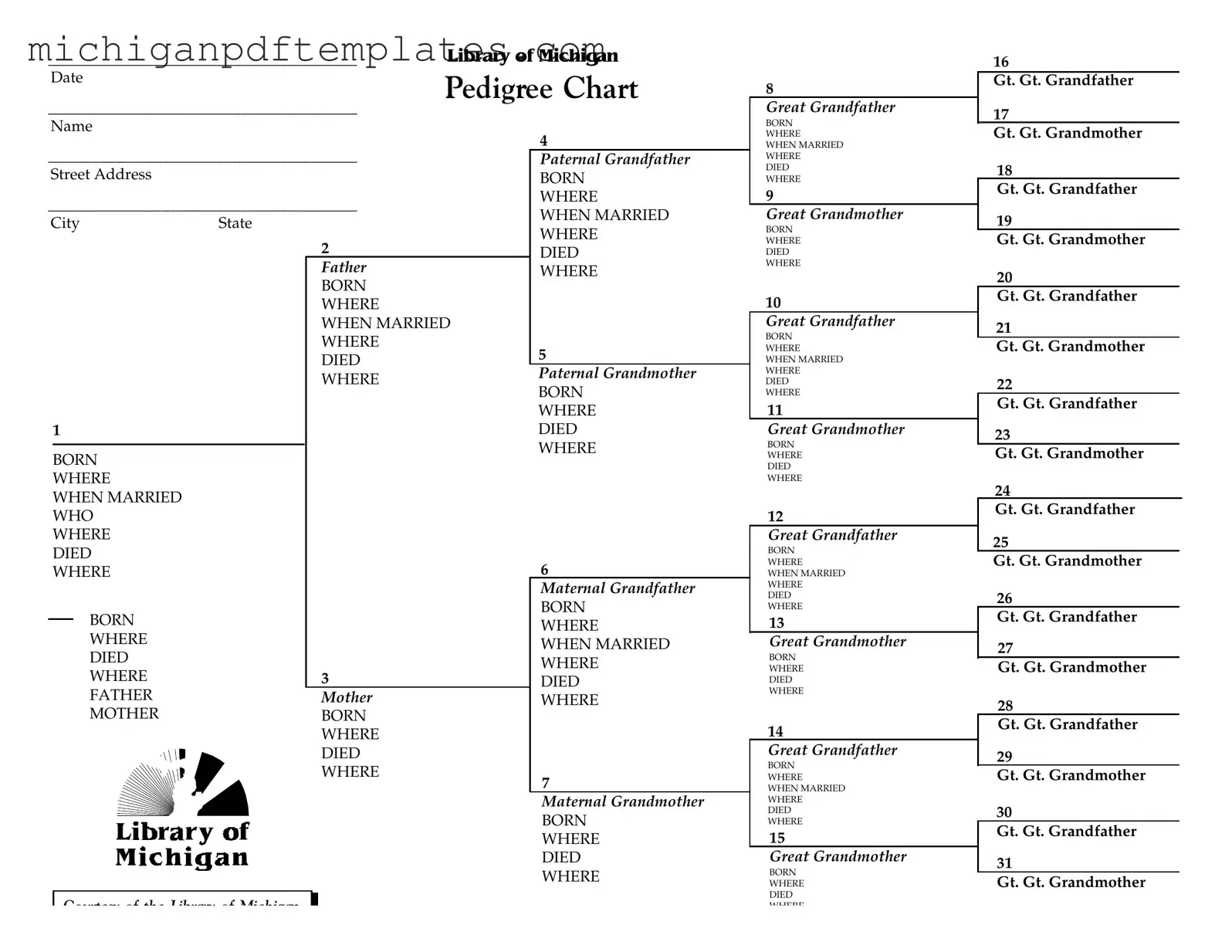Fill in Your Michigan Pedigree Form
The Michigan Pedigree form is a document used to trace and record family lineage, providing a structured way to capture vital information about ancestors. It includes details such as names, birthplaces, and marriage dates for multiple generations. Understanding how to fill out this form can enhance your genealogical research and preserve your family's history.
Start documenting your ancestry by filling out the Michigan Pedigree form. Click the button below to begin.
Get Your Form Now
